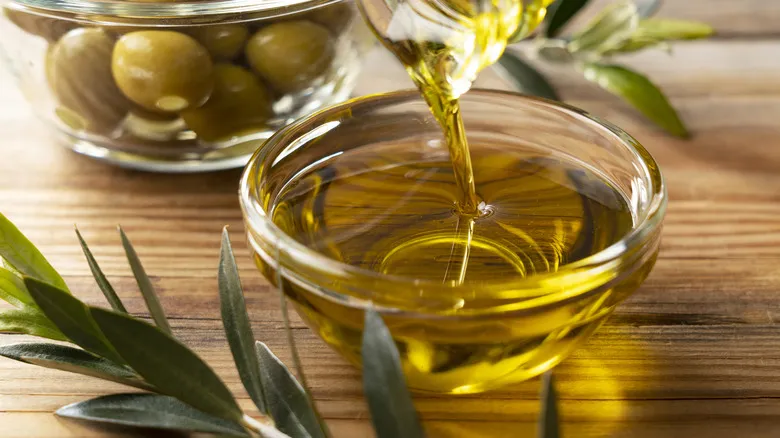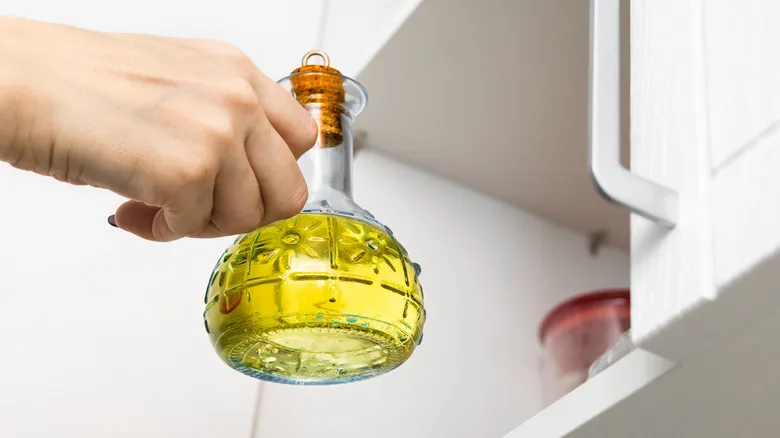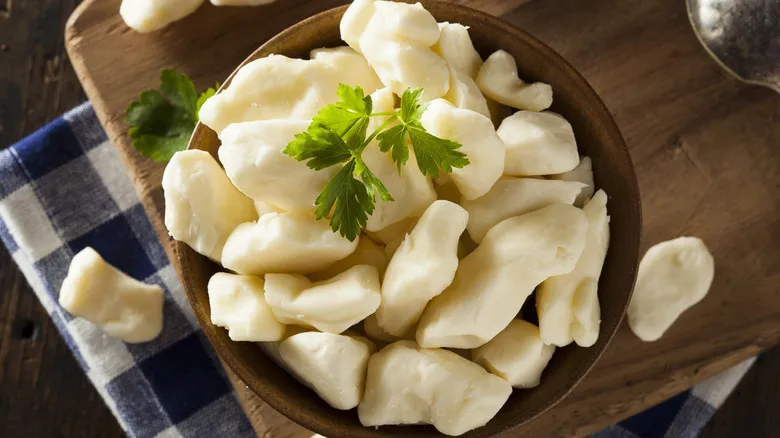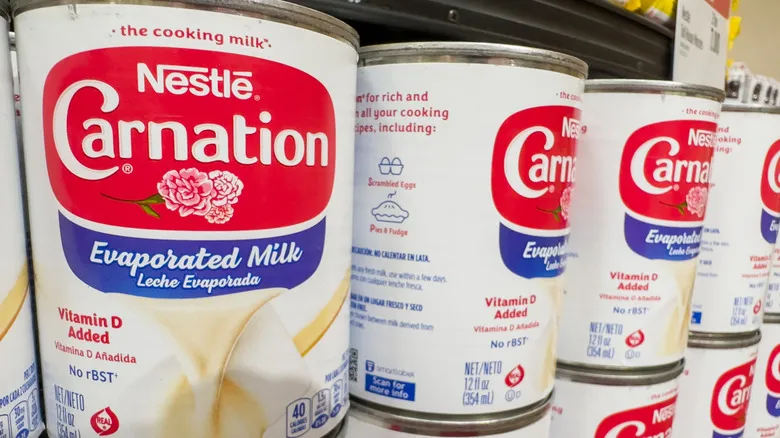Signs your olive oil has spoiled

Before transforming your olive oil into a caramel topping, using it to make a rich and creamy chicken fettuccine Alfredo, or incorporating it into any other dish, it's wise to perform a quick sniff test. Quality olive oil should have a bright, grassy aroma. Depending on the specific type of olive used, it may also have floral or fruity notes. In contrast, old olive oil loses its vibrancy and may smell musty or flat, resembling the scent of crayons or school glue, as noted by Brightland.
If the aroma doesn't provide enough insight, it's time to taste your olive oil. Fresh olive oil will have a flavor that mirrors its scent, offering a grassy taste with hints of fresh herbs, fruity undertones, and a buttery texture. High-quality oils often leave a peppery finish, creating a subtle spicy sensation in your mouth. On the other hand, spoiled olive oil will taste quite different; if it’s not stale, it may be sour or bitter. Any of these flavor changes are good reasons to discard it.
How to properly store olive oil

Olive oil generally has a shelf life of 18 to 24 months. However, once opened, it’s advisable to use it within two months, and no later than three to four months. The secret to prolonging the life of your olive oil lies in proper storage. Like many other condiments, such as fish sauce and vinegar, olive oil performs best when shielded from heat, light, and air.
To minimize exposure to these elements, store your olive oil in a tin or dark glass container that prevents sunlight from penetrating. A clear container should only be used if you intend to consume the oil quickly. Additionally, keep your olive oil away from the heat of the stove; a cool, dark location, such as a pantry or kitchen cabinet, is ideal for storage. Poor storage conditions can not only lead to off-flavors but can also cause extra virgin olive oil to lose vital antioxidants and nutrients that define its quality. Be aware of these factors to ensure you enjoy the freshest olive oil possible.
Recommended

Are Fresh Peaches Always Better Than Canned Or Frozen?

Can You Freeze Cheese Curds?

Why You May Want To Wash Farm Fresh Eggs

How Long Does Evaporated Milk Last After Opening?
Next up

